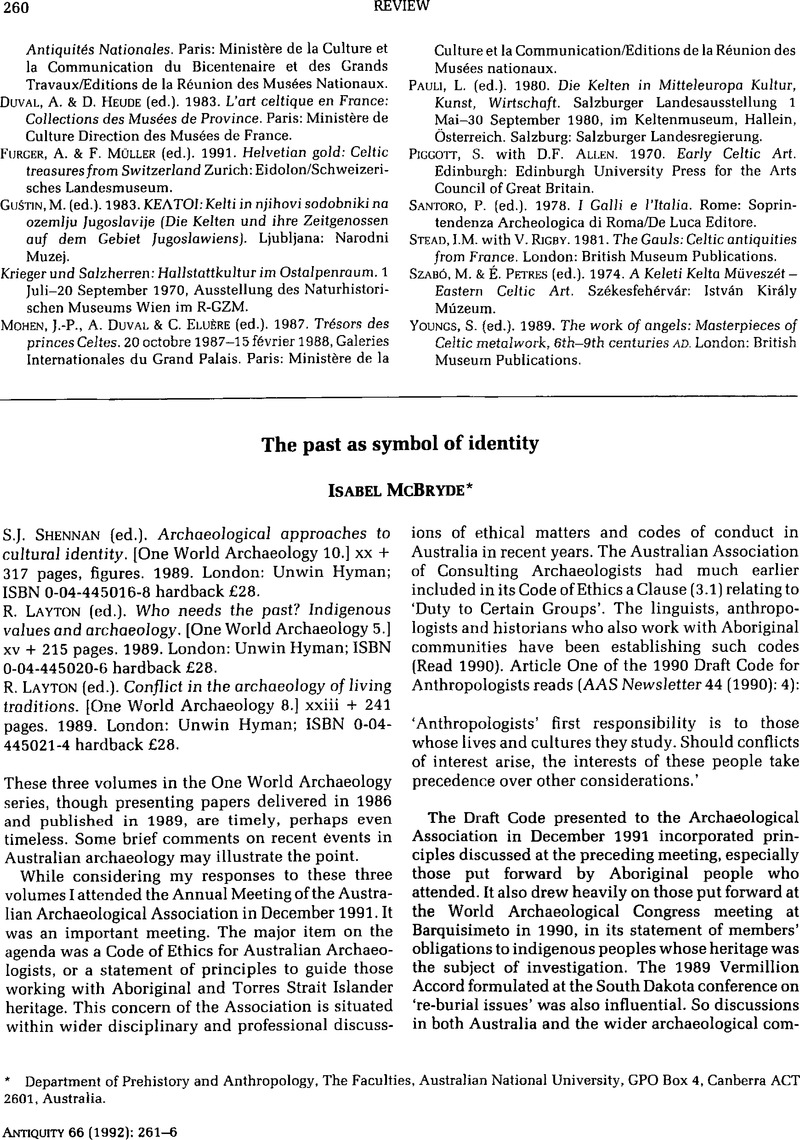Crossref Citations
This article has been cited by the following publications. This list is generated based on data provided by Crossref.
Pardoe, Colin
1992.
Arches of radii, corridors of power: Reflections on current archaeological practice.
Journal of Australian Studies,
Vol. 16,
Issue. 35,
p.
132.
Murray, Tim
1992.
Aboriginal (pre)history and Australian archaeology: The discourse of Australian prehistoric archaeology.
Journal of Australian Studies,
Vol. 16,
Issue. 35,
p.
1.
Murray, Tim
1993.
The childhood of William Lanne: contact archaeology and Aboriginality in Tasmania.
Antiquity,
Vol. 67,
Issue. 256,
p.
504.
Fredericksen, Clayton
2002.
Caring for history: Tiwi and archaeological narratives of Fort Dundas/Punata, Melville Island, Australia.
World Archaeology,
Vol. 34,
Issue. 2,
p.
288.
Lahn, Julie
2018.
Encyclopedia of Global Archaeology.
p.
1.
Lahn, Julie
2020.
Encyclopedia of Global Archaeology.
p.
6332.
David, Bruno
Fresløv, Joanna
Mullett, Russell
Delannoy, Jean-Jacques
McDowell, Matthew
Urwin, Chris
Mialanes, Jerome
Petchey, Fiona
Wood, Rachel
Russell, Lynette
Arnold, Lee J.
Stephenson, Birgitta
Fullagar, Richard
Crouch, Joe
Ash, Jeremy
Berthet, Johan
Wong, Vanessa N. L.
and
Green, Helen
2021.
50 years and worlds apart: Rethinking the Holocene occupation of Cloggs Cave (East Gippsland, SE Australia) five decades after its initial archaeological excavation and in light of GunaiKurnai world views.
Australian Archaeology,
Vol. 87,
Issue. 1,
p.
1.
Brumann, Christoph
and
Gfeller, Aurélie Élisa
2022.
Cultural landscapes and the UNESCO World Heritage List: perpetuating European dominance.
International Journal of Heritage Studies,
Vol. 28,
Issue. 2,
p.
147.





